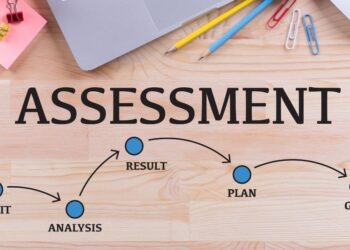Cracking the Cognitive Code: Unveiling How We Learn
Let’s explore how the intricate web of a child’s mind, especially around age three, significantly influences their learning journey.
1. The Interplay of Mind and Motivation
Educational psychology emphasizes that learning isn’t just about absorbing facts; it’s deeply intertwined with motivation and emotional intelligence. Research indicates that for three-year-olds, there’s a particularly strong connection between motivation and cognitive development. This suggests that sparking a child’s interest and enthusiasm can be a powerful lever in unlocking their cognitive potential.
2. Emotional and Artistic Connections
Beyond motivation, cognitive development is also closely linked with emotional factors and artistic expression. A child’s ability to express themselves creatively and navigate their emotions plays a crucial role in how they learn and process information. Recognizing these intertwined domains is essential for creating effective learning experiences.
3. Network Analysis of Development
A network analysis from Frontiers in Psychology sheds light on these relationships. The study looks at how parenting styles correlate with preschool children’s development in cognition, emotion, motivation, and art. The consistent theme highlights complex interactions among cognition, emotion, and motivation, which directly inform pedagogical strategies.
4. Key Developmental Factors at Age Three
The study underscores the importance of recognizing multiple intertwined domains—cognition combined with motivation and emotion—in understanding how young children learn effectively.
Motivation Mysteries: What Drives Students to Succeed?
Unlocking the secrets of student motivation is key to fostering a thriving learning environment. Let’s explore the factors that drive students towards academic success.
1. The Power of Autonomy in Learning
Recent studies highlight a fascinating connection: students who feel they have more say in their learning journey often display increased motivation. This sense of autonomy isn’t just about choosing subjects; it’s about having a voice in how they learn, leading to better emotional clarity and the ability to self-regulate, ultimately helping them navigate academic pressures with greater ease.
2. PE Class: A Playground for Motivation and Emotional Skills
Think about physical education class – it’s not just about exercise! Research indicates that when students are given choices and feel supported in PE, their intrinsic motivation and emotional skills get a significant boost. This suggests that creating environments where students feel empowered can have a profound impact on their overall engagement.
3. Self-Efficacy and the Intrinsic Motivation Loop
Believing in yourself is half the battle, especially when it comes to learning. Students who possess a strong sense of self-efficacy – that is, those who are confident in their academic abilities – tend to be more intrinsically motivated. This inner drive fuels their spontaneous engagement with learning, creating a positive feedback loop that enhances their academic performance.
4. Gender and Extracurricular Activities as Motivational Factors
Interestingly, studies reveal that female students often exhibit higher levels of self-determined motivation compared to their male counterparts. Furthermore, engaging in extracurricular sports activities can serve as a catalyst for positive motivation. These observations underscore the importance of considering individual differences and offering diverse avenues for students to connect with their passions and find their drive.
5. Nurturing Motivation: A Call to Action for Educators
The insights gleaned from these studies paint a clear picture: educators have a vital role to play in fostering student motivation. By providing choices, cultivating supportive environments, and prioritizing emotional literacy, educators can unlock students’ cognitive potential and set them on a path towards long-term academic success.
Classroom Dynamics Decoded: Understanding Student Behavior
Dive into the heart of classroom interactions and learn how understanding student behavior can transform the learning environment.
1. Addressing Emotional and Behavioral Disorders (EBD)
In American educational psychology, a key aspect of improving classroom quality involves understanding and addressing student behavior, particularly when dealing with Emotional and Behavioral Disorders (EBD). Teachers play a vital role not only in imparting knowledge but also in assisting students to regulate their emotions, foster trust, and cultivate essential social skills.
2. The Essence of Effective Classroom Management
Effective classroom management hinges on a teacher’s capacity for patience and empathy. It’s about more than just maintaining order; it’s about creating a supportive atmosphere where students feel understood and valued. This also involves close collaboration with families and school teams to provide a holistic approach to student well-being and academic progress.
3. The Bidirectional Influence of Emotions
Recent research highlights the reciprocal nature of emotional experiences between teachers and students. This suggests that enhancing positive emotional experiences within the classroom requires a dual focus: attending to the feelings and interactions of both the teachers and the students. By fostering a positive emotional climate, educators can create a more engaging and supportive learning environment for everyone involved.
4. The Power of High-Quality Communication
Communication plays a crucial role in shaping student motivation and self-efficacy. Constructive feedback and respectful interactions are essential for unlocking students’ potential. Conversely, inappropriate or disrespectful feedback can significantly undermine their motivation and confidence. Therefore, educators should prioritize high-quality communication as a means of inspiring and empowering students.
5. Cognitive Development and Personalized Support
The findings underscore the importance of cognitive development, motivational mechanisms, and emotional intelligence in shaping the learning process. These insights provide a theoretical foundation for developing personalized support plans tailored to unlock the unique potential of each student. By considering these factors, educators can create a more inclusive and effective learning environment for all.
Emotional Intelligence in Education: The Hidden Key to Success
Explore how emotional intelligence impacts teaching performance and cultivates resilient learning environments, setting the stage for student success.
1. The Link Between Emotional Intelligence and Teaching Performance
Recent studies underscore the significant role of emotional intelligence in enhancing teaching performance, especially among new generation educators. These findings suggest that educators who excel in understanding, managing, and expressing emotions tend to achieve higher performance ratings. This highlights the importance of emotional skills in the educational field, pointing towards a need for greater emphasis on emotional intelligence in teacher training programs.
2. Performance Ratings and Emotional Competence
Educators with strong emotional intelligence often receive high performance ratings, such as “Very Satisfactory” or “Outstanding.” These ratings reflect their ability to navigate the emotional demands of the classroom, handle stress effectively, and adapt to various teaching scenarios. The July 2025 study provides a glimpse into these trends, showcasing the correlation between emotional intelligence and observed teaching effectiveness.
Q&A
Question 1: What is the central argument regarding learning styles presented in the provided text?
Answer: The text challenges the validity of traditional learning styles (visual, auditory, kinesthetic) and advocates for multimodal teaching. Research lacks strong evidence supporting improved outcomes from matching teaching to specific learning styles. Multimodal approaches, incorporating various methods, are considered more effective in engaging students and improving learning outcomes.
Question 2: How does the text describe the relationship between motivation, emotion, and cognitive development in young children (around age three)?
Answer: The text highlights a strong interplay between motivation, emotion, and cognition in three-year-olds. A study referenced shows complex interactions among these factors, suggesting that fostering motivation and addressing emotional needs are crucial for effective cognitive development. Artistic expression is also linked to these processes.
Question 3: What factors contribute to student motivation according to the provided text?
Answer: Several factors contribute to student motivation, including autonomy in learning (having a voice in how they learn), supportive and empowering environments (like PE class), strong self-efficacy (belief in one’s abilities), and engagement in extracurricular activities. Gender differences in motivation are also noted, with female students often showing higher self-determined motivation.
Question 4: How does the text define and explain the importance of emotional intelligence in education?
Answer: The text emphasizes the significant role of emotional intelligence in enhancing teaching performance and creating resilient learning environments. Educators with strong emotional intelligence receive higher performance ratings, demonstrating their ability to manage classroom emotions and build supportive relationships. Integrating emotional intelligence training is advocated for fostering student success.













